You have no doubt heard about roosters and hens, but do you know the difference? When it comes to a rooster vs hen, how can you tell them apart, and what are the primary distinctions that you can make between them? There is an obvious one that you may already be aware of: roosters are exclusively male chickens, while hens are exclusively female chickens. But this is not where their differences end.
In this article, we will discuss all of the key differences between roosters and hens, including how you can tell them apart and what you can expect from the behaviors of these two genders of birds. Read on to learn more about roosters and hens now!
Comparing Rooster vs Hen
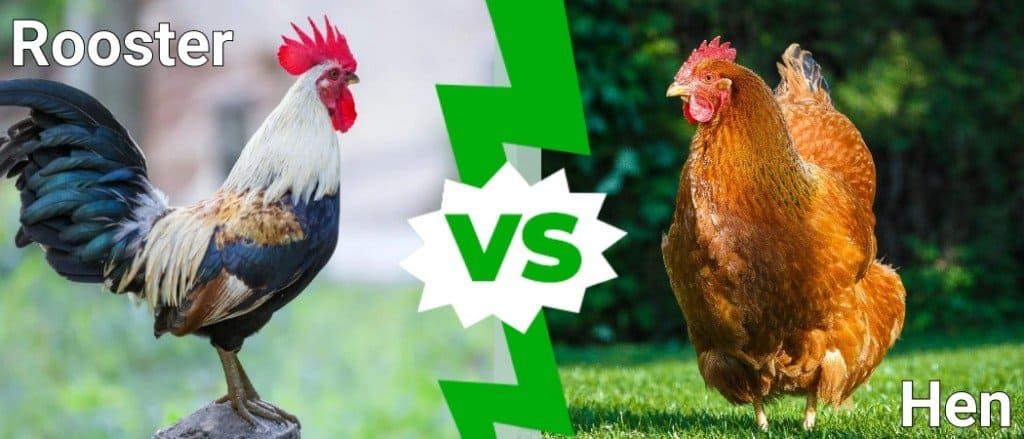
| Rooster | Hen |
|---|---|
| Gender: Male | Female |
| Appearance: Elaborate head and tail feathers; large comb and waddle | Shorter head and tail feathers |
| Size: Usually larger than hens | Usually smaller than roosters |
| Duties: Protects the flock, fertilizes eggs so more chickens can hatch | Lays eggs and takes care of baby chicks |
| Lifespan: 2-8 years | 5-10 years |
| Lays Eggs? NO | YES |
The Main Differences Between Rooster vs Hen
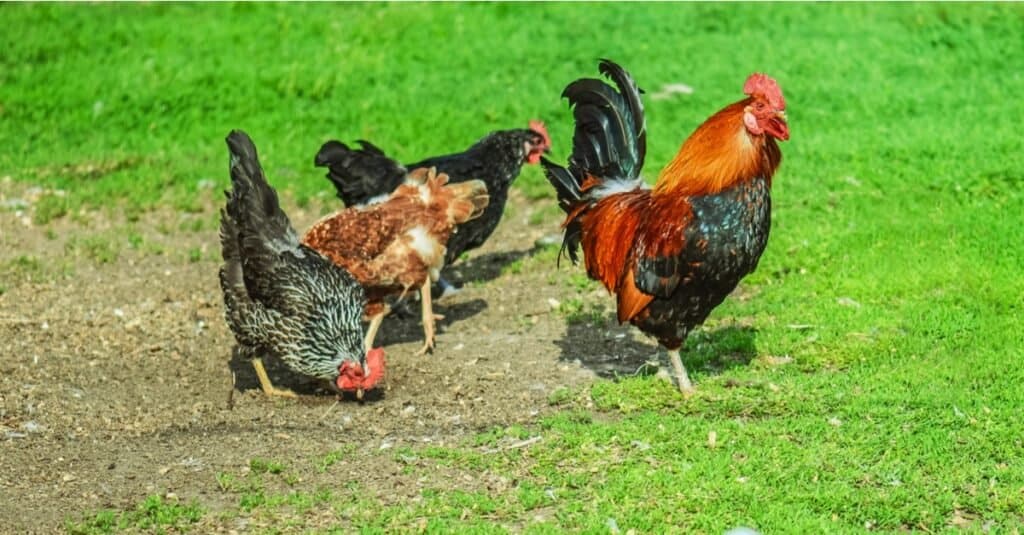
Roosters are exclusively male chickens, while hens are exclusively female chickens.
©iStock.com/-101PHOTO-
There are many differences between roosters vs hens. The primary difference lies in the gender of these two birds, as roosters are exclusively male and hens are exclusively female chickens. This means that their differences continue in their duties and ability to lay eggs. Roosters are made to protect their flock and fertilize eggs, while hens are primarily useful for their ability to lay eggs and take care of baby chickens.
Now that you know some of the basic differences, let’s go into these facts about roosters and hens in more detail.
Rooster vs Hen: Gender
As we have already mentioned, the primary difference between a rooster versus a hen is their gender. Roosters are exclusively male chickens, while hens are exclusively female chickens. These distinctive names are colloquial terms for how we tell the gender of chickens apart in the first place.
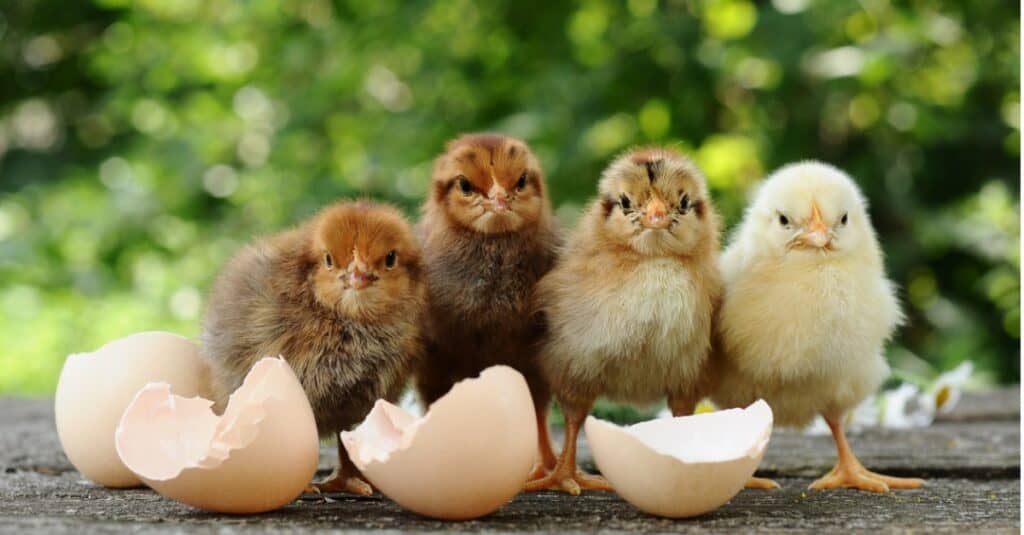
Roosters are made to protect their flock and fertilize eggs, while hens are primarily useful for their ability to lay eggs and take care of baby chickens.
©iStock.com/OlgaVolodina
Rooster vs Hen: Appearance
Another difference between a rooster and hen is their appearance. While hens and roosters can look very similar depending on their specific breed, there are some distinguishing features that set roosters apart from their egg-laying counterparts. Let’s discuss some of those differences now.
One key difference in the appearance of roosters and hens is the showiness of the feathers. Roosters often have longer and more elaborate feathers than the average hen, and these feathers extend from their neck all the way to their tails. A rooster’s tail feathers are often far more distinct than a hen’s.
There are a few more key physical differences between a rooster vs hen. For example, roosters have more developed combs atop their heads, while some hens never have combs at all. Roosters also have thicker legs when compared to a hen, and some particular breeds even have spurs or hooked talons on their legs. Hens do not often have spurs.
Rooster vs Hen: Duties
A primary difference between roosters and hens is their required duties. Roosters are dedicated defenders of their flocks, while hens are primarily involved in the laying and raising of eggs and baby chickens. A male chicken is so devoted to protecting his flock that he often resorts to territorial violence against any perceived threats.
While roosters defend all of the birds in their flock or coop, hens live their lives laying eggs and eating. This is one key difference in the behavior between roosters and hens, given that their duties within their flocks are entirely different.
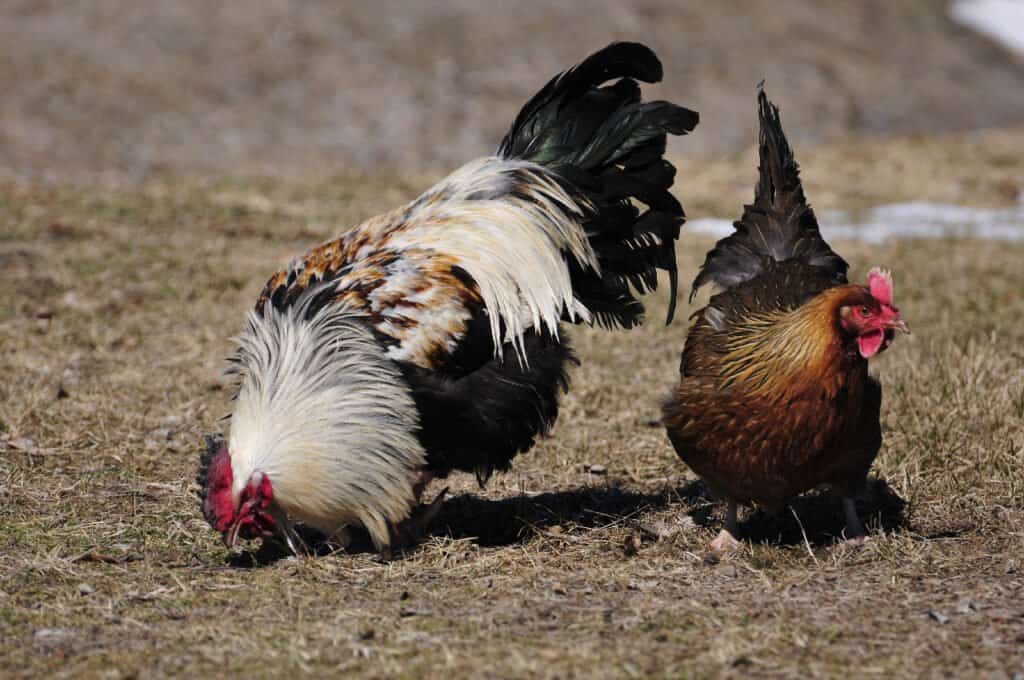
Roosters often have longer and more elaborate feathers than the average hen, and these feathers extend from their neck all the way to their tails.
©Alicia Cooper/Shutterstock.com
Rooster vs Hen: Personality
Another key difference between roosters and hens lies in their personalities. While roosters exhibit aggressive behavior on behalf of their flock, hens are friendlier and kinder than roosters. This is not an absolute rule, but it is something that you may observe if you spend any amount of time near a flock of chickens.
In general, roosters are more observant and territorial than hens are based on their breeding and familial duties. Hens are more soft-spoken than roosters are, but this doesn’t mean that female chickens aren’t talkative. Far from it; but there’s nothing better than a trademark rooster call!
Hens can also be territorial with their babies, especially knowing that a rooster is watching over them. For example, hens have a distinct call that they can use to alert a rooster of a threat to their eggs. This makes roosters react in a territorial fashion and often leads to more aggression, and understandably so.
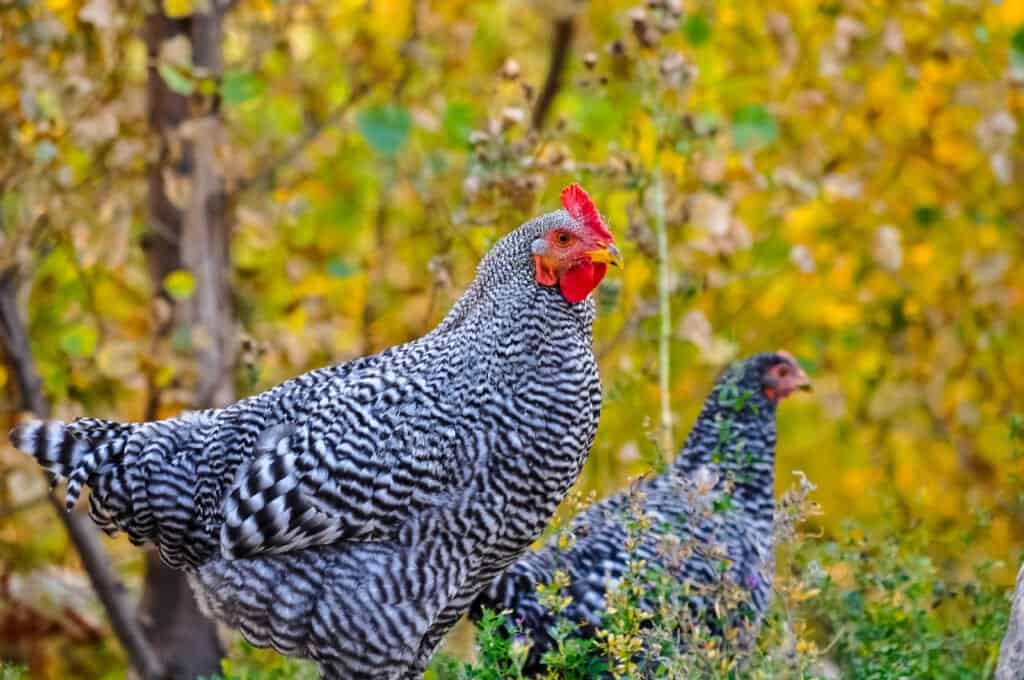
In general, roosters are more observant and territorial than hens are based on their breeding and familial duties.
©Jennifer de Graaf/Shutterstock.com
Rooster vs Hen: Ability to Lay Eggs
A final difference between roosters vs hens is their ability to lay eggs. In case it wasn’t clear by this point, hens lay eggs while roosters cannot. However, baby chickens are not born without the help of a rooster. Roosters are responsible for fertilizing eggs, while hens are responsible for laying them and keeping the eggs warm until they are ready to hatch.
However, some breeds of roosters have been known to sit on young chicks after they have hatched. They do not sit on eggs, as this is the hens’ primary duty, but some roosters will indeed help keep their babies warm once they have all hatched from their eggs. A rooster wants to protect his offspring and his hens, so he will often do whatever job needs doing!
The photo featured at the top of this post is © iStock.com/IsaacRuiz
Thank you for reading! Have some feedback for us? Contact the AZ Animals editorial team.






